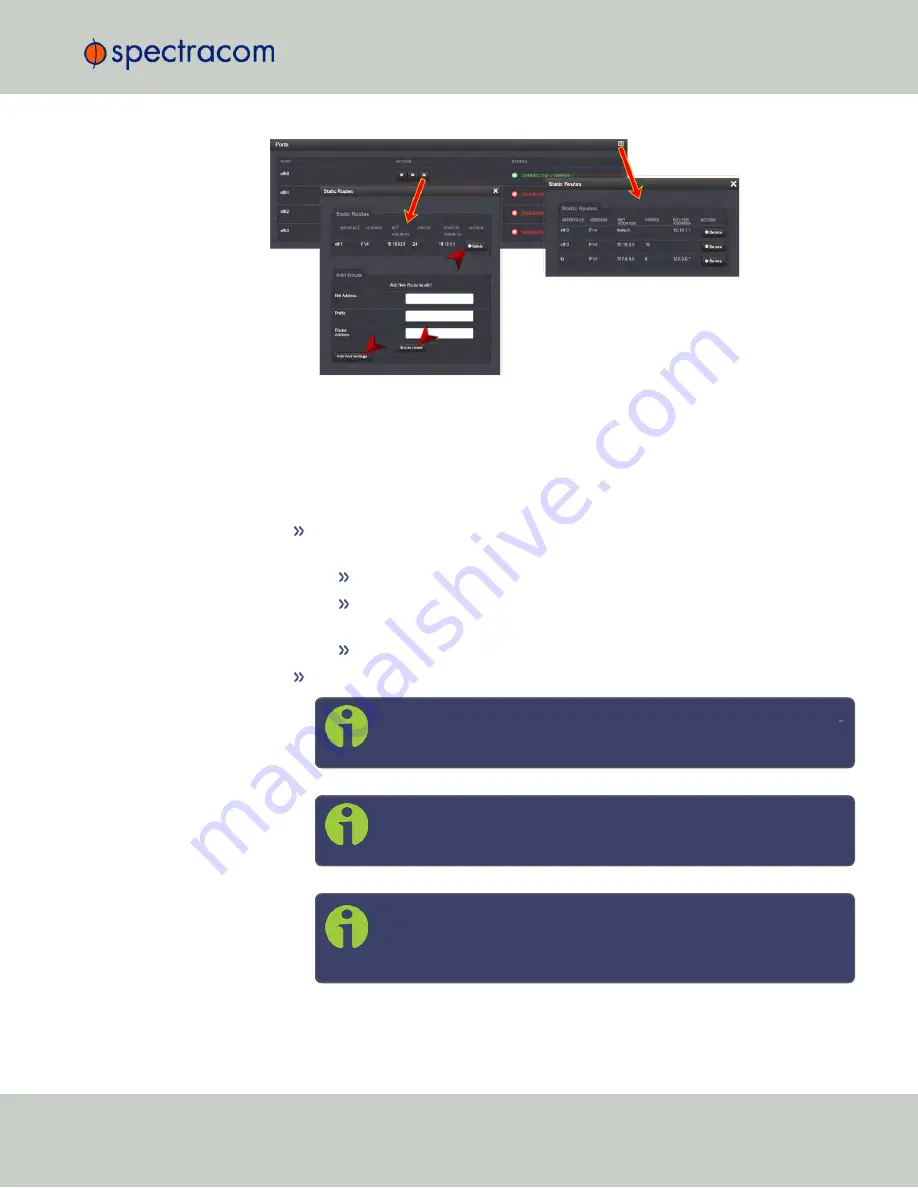
3.
To
view all
configured Static Routes for all Ethernet Ports, or
delete
one or more Static
Routes, click the
TABLE
icon in the top-right corner.
4.
To
add
a new Route,
view
or
delete
an existing Route for a specific Ethernet Port, locate
the Port listing you want to configure, and click the
TABLE
button next to it.
The
Static Routes
window for the chosen Port will open, displaying its Routing Table,
and an
Add Route
panel.
In the
Add Route
panel, populate these fields in order to assign a Static Route to
a Port:
Net Address
: This is the address/subnet to route to.
Prefix
: This is the subnet mask in prefix form e.g., "24". See also "Subnet
Mask Values" on page 53.
Router Address
: This is where you will go through to get there.
Click the
Add Route
button at the bottom of the screen.
Note:
To set up a static route, the Ethernet connector must be phys
ically connected to the network.
Note:
Do not use the same route for different Ethernet ports; a route
that has been used elsewhere will be rejected.
Note:
The
eth0
port is the default port for static routing. If a port is
not given its own static route, all packets from that port will be sent
through the default.
2.14 Configuring Network Settings
CHAPTER
2
•
NetClock User Reference Guide
Rev.
16
65
Summary of Contents for NetClock 9400 Series
Page 2: ......
Page 4: ...Blank page II NetClock User Reference Guide...
Page 16: ...BLANK PAGE XIV NetClock User Reference Guide TABLE OF CONTENTS...
Page 42: ...BLANK PAGE 1 11 Regulatory Compliance 26 CHAPTER 1 NetClock User Reference Guide Rev 16...
Page 160: ...BLANK PAGE 2 17 Configuring Outputs 144 CHAPTER 2 NetClock User Reference Guide Rev 16...
Page 238: ...BLANK PAGE 3 5 Managing the Oscillator 222 CHAPTER 3 NetClock User Reference Guide Rev 16...
Page 462: ...BLANK PAGE 446 NetClock User Reference Guide...






























